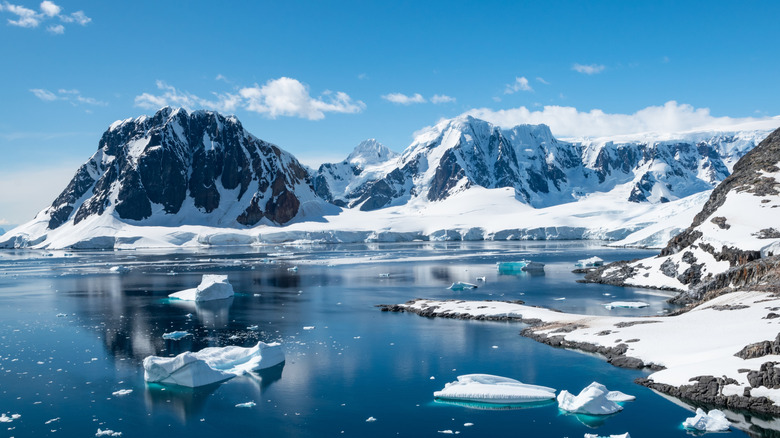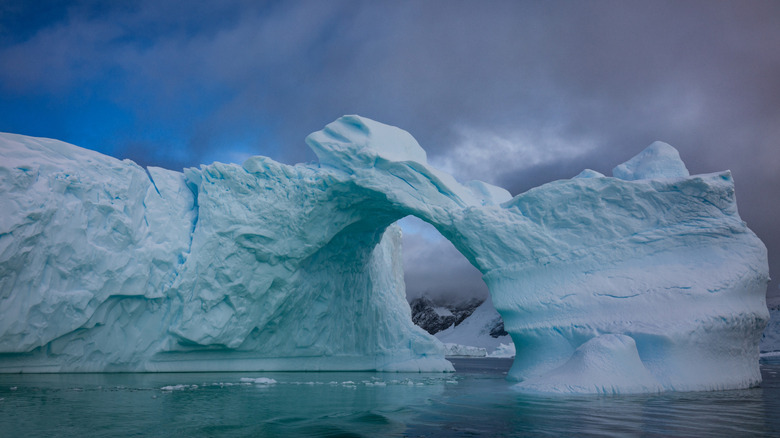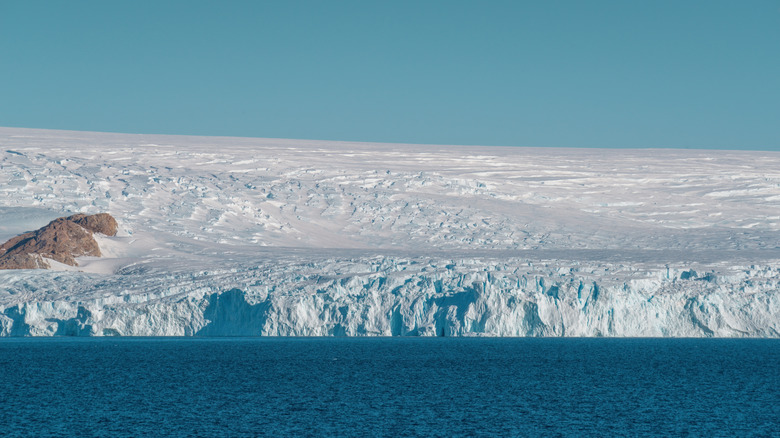What's Really Hidden Under Antarctica's Ice?
Antarctica is the area of Earth with the coldest climate — a barren land where very few lifeforms can survive. One of two continents located entirely in the Southern hemisphere, Antarctica may seem like it's a relatively simple continent to understand. After all, it's just one giant sheet of ice in the Southern Ocean with very little biodiversity. But this frigid landscape is actually much more interesting and important than you might think.
It's true that Antarctica is essentially one giant sheet of ice, but that ice sheet itself is hugely important to our planet. It is the largest mass of ice in the world, dwarfing the United States and roughly equating to about twice the size of Australia. The ice is also around 7,000 feet thick and plays some vital environmental roles, from reflecting the sun's heat, to hosting a variety of microscopic plants and species of blooming algae, mosses, lichens, and grass which absorb hundreds of tons of carbon each year. The Antarctic ice sheet also helps control sea levels and sea currents around the world.
As such, it's a hugely important environmental feature of our planet, and now scientists have discovered a hidden world beneath it that could drastically change our understanding of the Antarctic ice sheet and how climate change might progress in the future.
Scientists discover hundreds of caverns beneath the Antarctic ice
A team of researchers have used high-resolution bathymetric data — i.e. data on the water depth and topography of the ocean surrounding Antarctica — to identify a previously hidden series of caverns which could have big implications for our understanding of the continent and its history as well as the global climate.
A study published in Marine Geology details how researchers from the University of Barcelona and University College Cork uncovered 332 previously undiscovered submarine canyons below the Antarctic margin — the area where the Southern Ocean meets the continent of Antarctica. The team gathered data from more than 40 international expeditions and the International Bathymetric Chart of the Southern Ocean to create the most detailed catalogue of Antarctic submarine canyons and gullies yet, some of which sit more than 13,123 feet below sea level. The resulting map revealed almost five times as many canyons as previous studies.
The Antarctic ice sheet is divided into three sectors: the East Antarctic, West Antarctic, and the comparatively tiny Antarctic Peninsula ice sheet. In the study, researchers noted differences between margins in the east and west of Antarctica, with the former showing the most complex and largest drainage networks, which channel sediments and water masses between the Antarctic shelf and the Southern Ocean. The Antarctic Peninsula, meanwhile, was revealed to have the greatest number of networks. The western sector has less complex cavern systems and shorter network lengths which could tell us a lot about the glacial histories of the two main regions and how climate change has shaped their formation, thereby informing predictive models of global warming.
Why is this Antarctic discovery significant?
Many of the underwater features discovered by the University of Barcelona and University College Cork team were completely undetected prior to this latest study. But now, we have the first ever fully coherent map of the Antarctic margin ever produced, which could prove hugely influential in our attempts to tackle climate change.
In recent years, these Antarctic submarine canyons have been identified as crucial to our understanding of climate change and global warming, mostly due to the fact they facilitate water and sediment flow and the mixing of water. Ultimately, these large canyons help drive global thermohaline circulation, which refers to currents flowing thousands of meters below the ocean's surface driven by differences in the water's density, which are in turn controlled by temperature and salinity. This then contributes to temperatures and nutrient distribution across the planet's oceans.
Perhaps more importantly, the underwater canyons also allow water to flow upwards towards the ice sheet, which means warm water from the deep ocean can contribute to the melting of the ice from below. This has major implications as the Antarctic ice is melting more quickly than new snow can replace it, and the losses are only increasing. According to NASA, Antarctica is losing ice at an average rate of about 136 billion tons per year and has been losing mass since 2002. The agency also notes that water resulting from the melting of ice in Antarctica and Greenland is responsible for roughly one-third of the global average sea level rise since 1993. This also relates to the alarming reason flowers are blooming in Antarctica.
Using the newly constructed map of the Antarctic ice sheet, experts should find it much easier to reconstruct ice flow history in the region, which in turn will inform predictive models of how the region might respond to future global warming, ultimately helping us in our struggle to fight climate change and its devastating effects.


